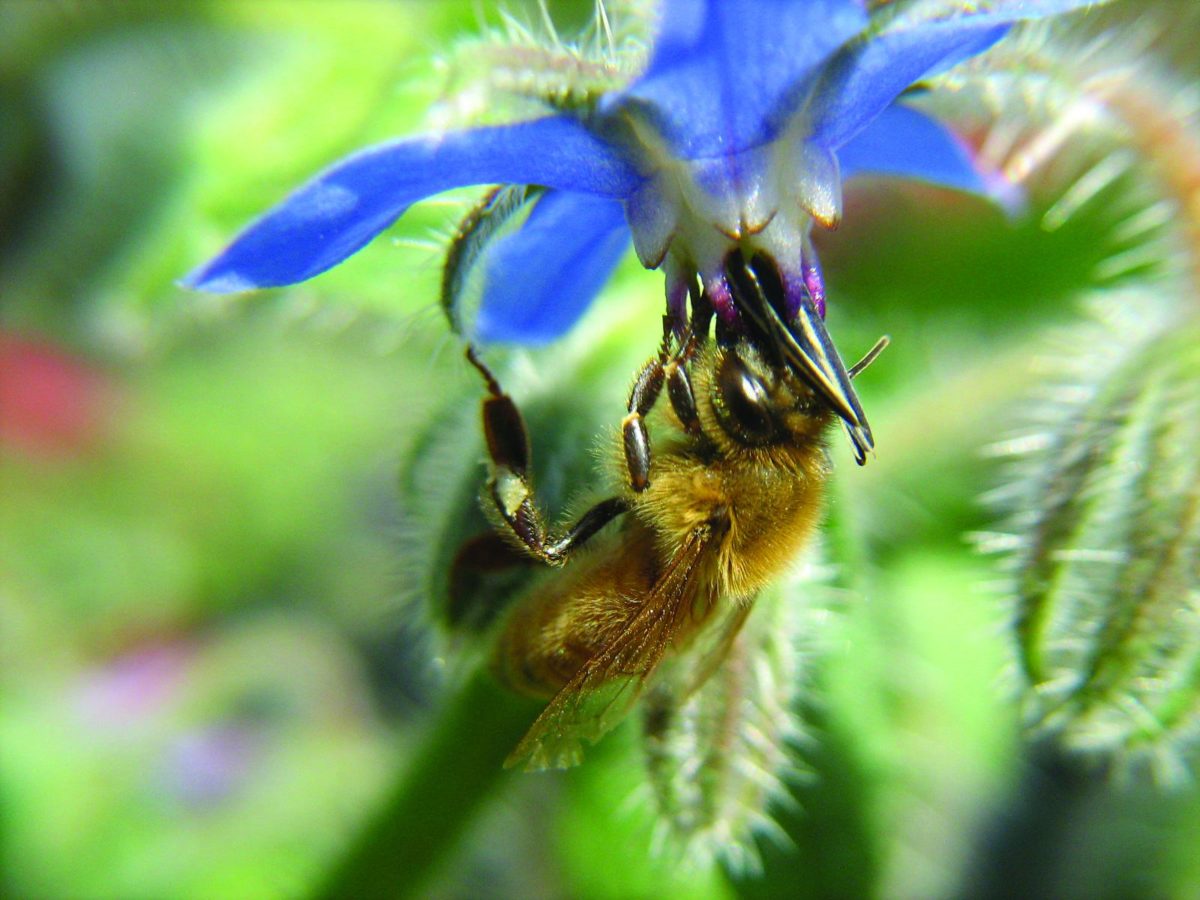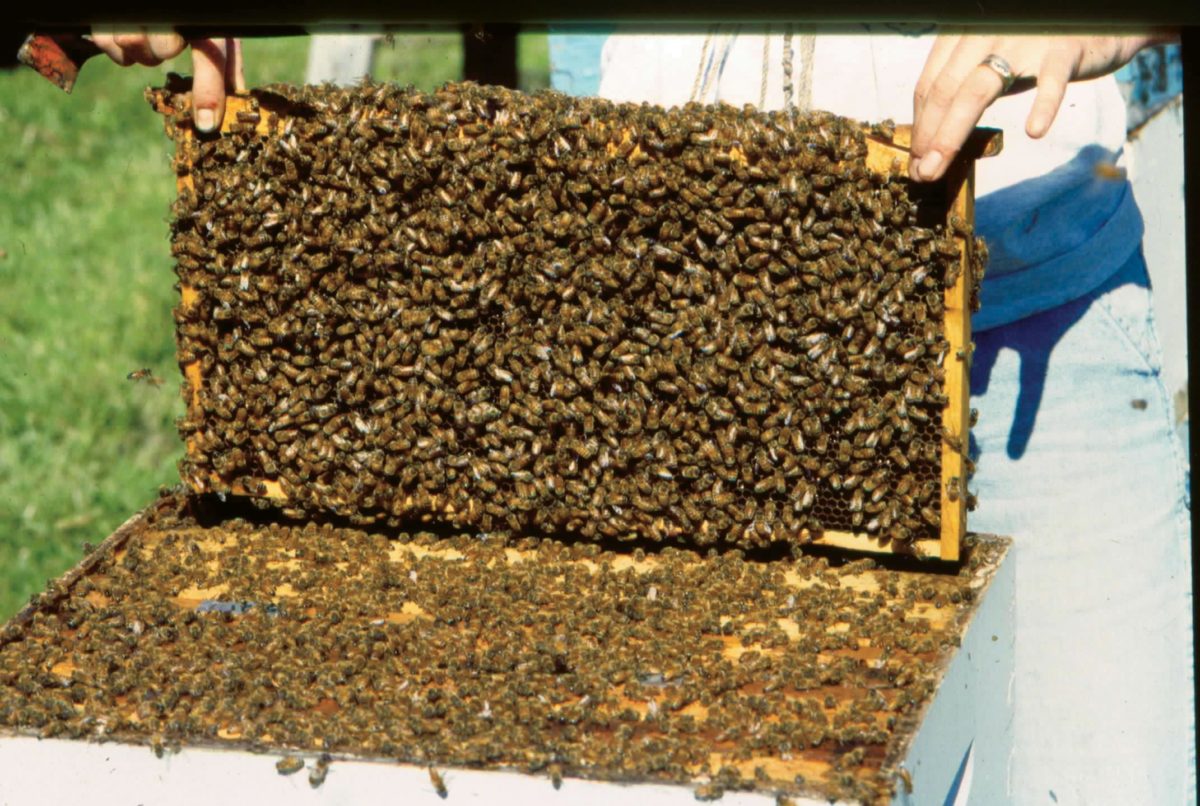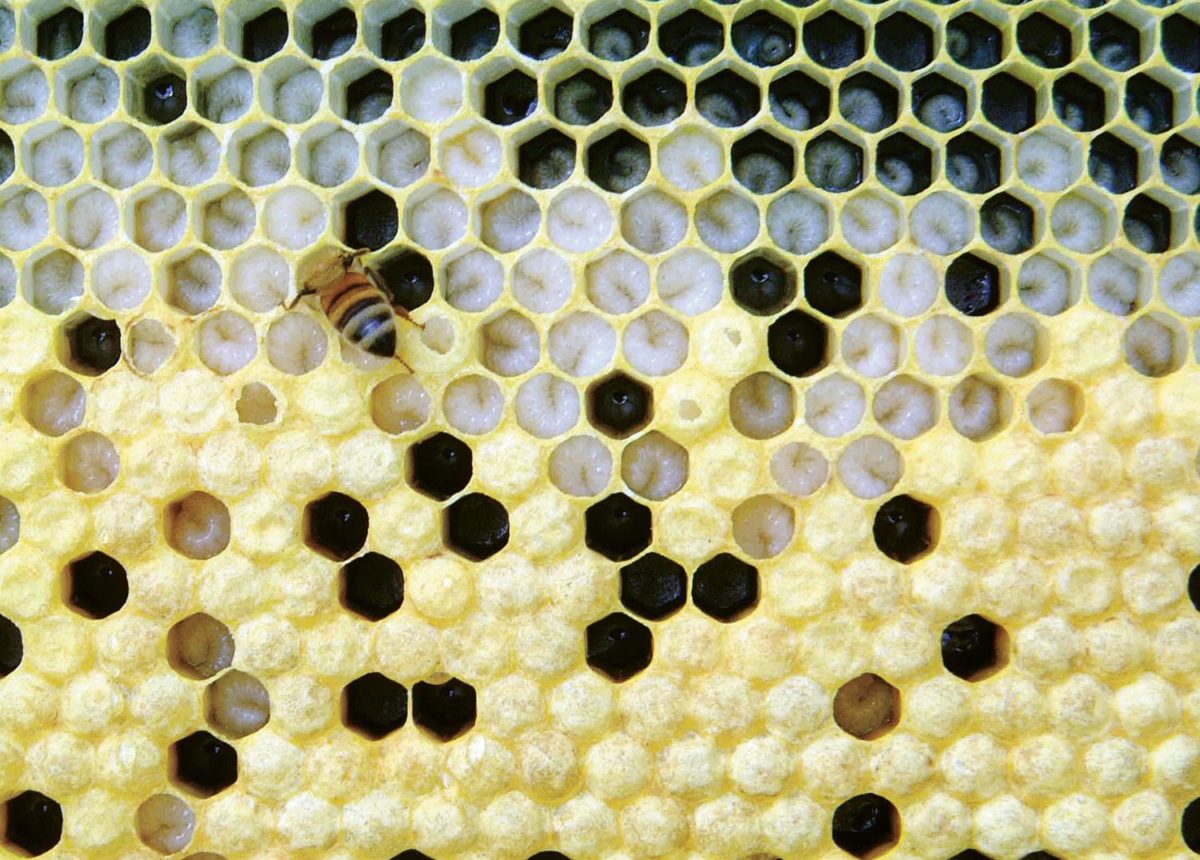
Honey bees are great pollinators because they live in colonies with very large populations and require copious amounts of pollen to survive. A large, healthy colony can have up to 50,000 adult bees (Figure 2.2). The queen can lay around 1,000 eggs per day, and each larva requires large amounts of protein-rich food for the first five days of its development (Figure 2.3). This food, called royal jelly or brood food, is produced in glands located in the heads of young bees, and these glands develop in response to young bees consuming lots of pollen. They can store some pollen in the nest for times of dearth, but when the colony is really growing, the older bees must forage daily to support the growth and development of their enormous family. Honey bees will fly a remarkable 1 to 3 miles (1.6 to 4.8 kilometers) to reach the best pollen and nectar plants.
The biology of honey bees makes them excellent pollinators, but their numbers and health are in serious decline in the US. What are the events that led honey bees to this low point?
Honey bees were extinct in North and South America when Apis mellifera was introduced by European settlers in the 1600s—a 14 million-year-old fossil honey bee called A. nearctica found in Nevada indicates honey bees were once present. Before honey bees were introduced in the 1600s, native bee species were abundant and pollinated native plants. The most common of these included: sand or mining bees (in the family Andrenidae); plasterer bees (family Colletidae); sweat bees (family Halictidae); mason and leafcutter bees (Megachilidae); and bumble bees, carpenter bees and digger bees (all in the family Apidae). Honey bees (also in the family Apidae) thrived in the New World, particularly as we introduced non-native and invasive weedy plants.

As a honey bee colony prospered, it would outgrow the size of its manmade nest boxes and swarm, sending out half of the bees and the queen to initially bivouac before moving into and occupying a new nest site. Swarming is how honey bees propagate new colonies—how their population increases naturally. Swarms that survive the winter grow into another large colony the next year. The bees that remain in the natal nest rear a new queen bee and continue unhampered. Many of these swarms occupy tree and other cavities large enough to accommodate their populations and honey stores. These colonies are called wild or feral honey bee colonies, but in the US, feral honey bees originated as escapees from manmade equipment.
In the past, numbers of managed and feral honey bees, and other native bees, were sufficient enough to satisfy most pollination needs. If a farmer grew a few acres of a crop that required bees for pollination—such as apples or pumpkins—a beekeeper would bring a few colonies of honey bees to the area in exchange for a handshake. If a farmer grew 100 acres (40.5 hectares) of a crop that required pollination, a beekeeper would bring in enough colonies to supply 1 to 2 colonies per acre (2.5 to 5 colonies per hectare). In most cases, the bees thrived on the blooming crop and surrounding wildflowers—a beneficial situation for all involved.

In the last 50 years or so, crop sizes have increased dramatically and so has insecticide and herbicide use, which has altered the landscape in new and alarming ways. Crops are sprayed or dusted with compounds to control pest insects. Herbicides are used to eliminate weeds, which reduces the bees’ food supply. Most farmers have stopped rotating their crops with clover and alfalfa, prime floral resources for bees, and instead use nitrogen fertilizers to replenish the soil. In most cases, modern developments have not been friendly to honey bees or our native bees.
